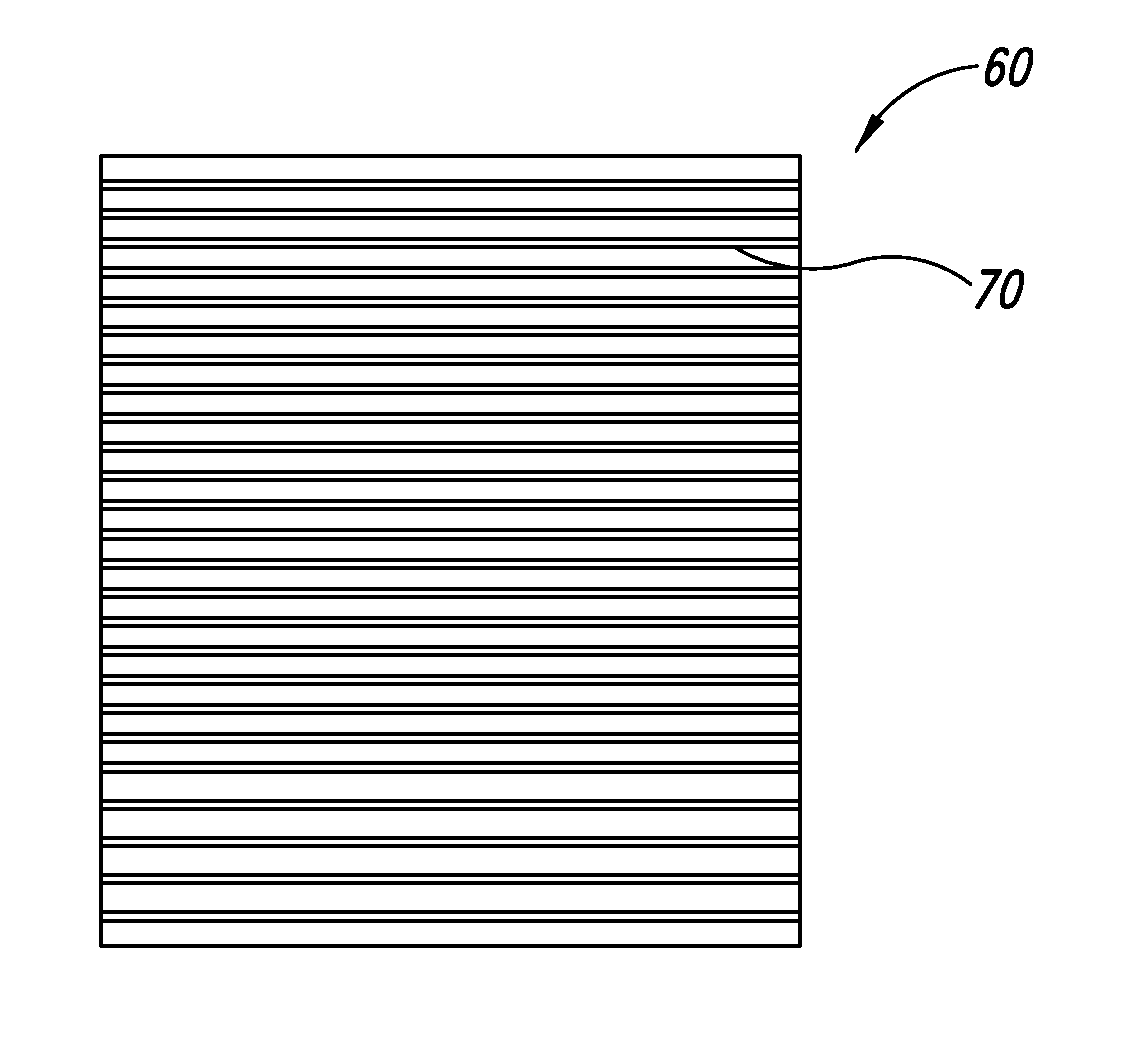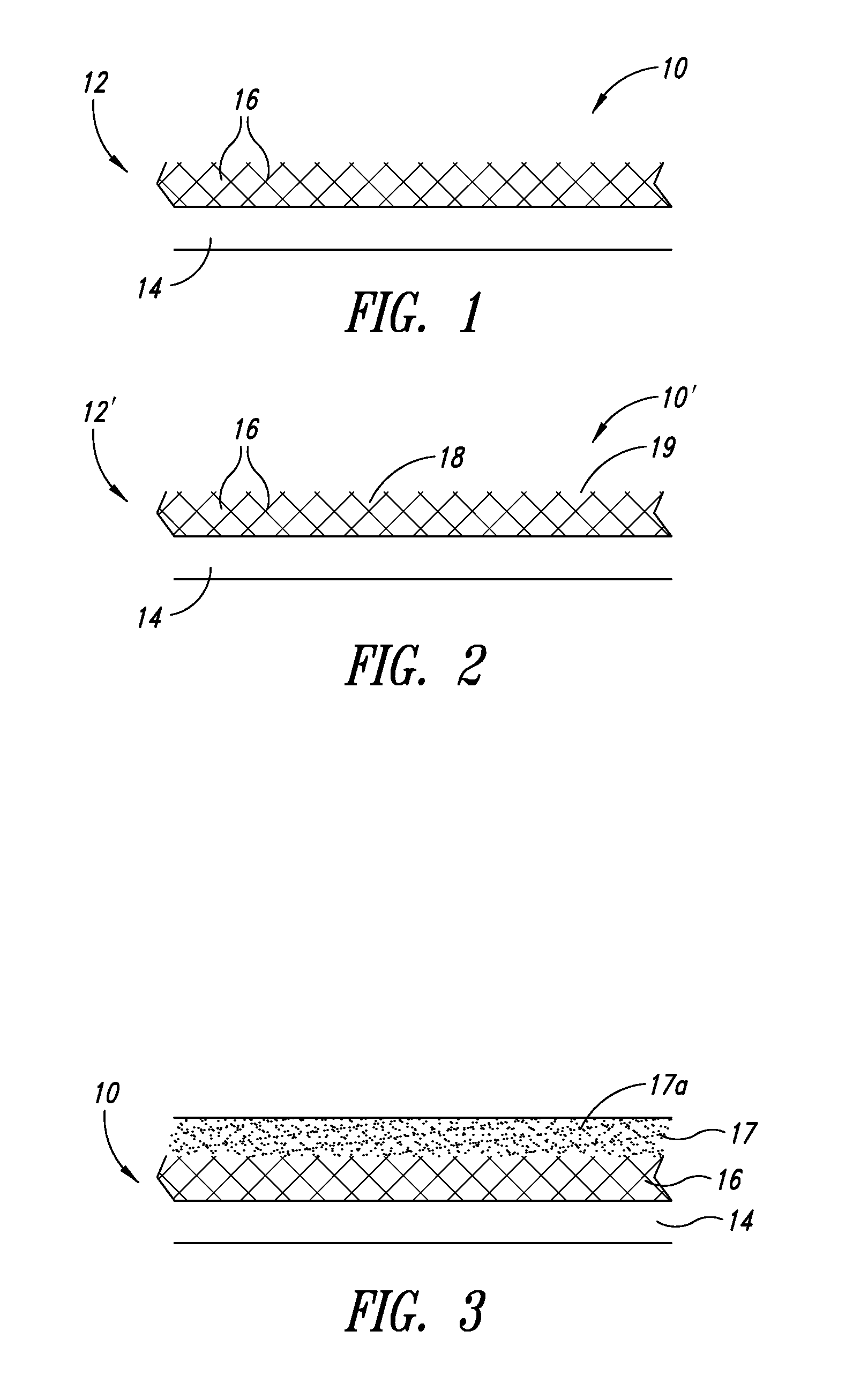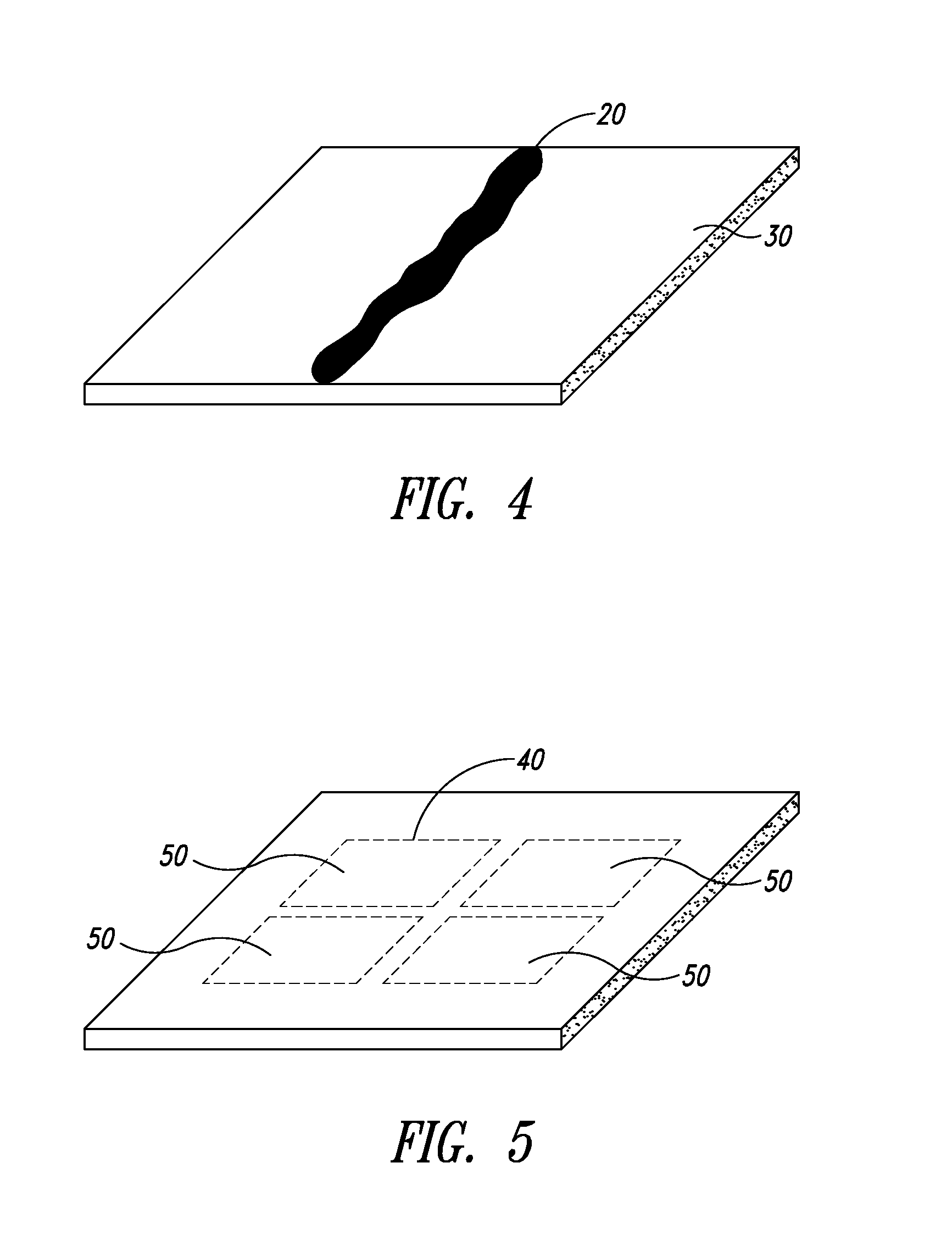Etch patterning of nanostructure transparent conductors
a transparent conductor and nano-structure technology, applied in the direction of insulated conductors, power cables, cables, etc., can solve the problems of difficult to adhere to metal oxide films, metal oxide films are fragile and prone to damage, and the application of metal oxide films on flexible substrates is severely limited
- Summary
- Abstract
- Description
- Claims
- Application Information
AI Technical Summary
Benefits of technology
Problems solved by technology
Method used
Image
Examples
example 1
Synthesis of Silver Nanowires
[0116]Silver nanowires were synthesized by the reduction of silver nitrate dissolved in ethylene glycol in the presence of poly(vinyl pyrrolidone) (PVP) following the “polyol” method described in, e.g., Y. Sun, B. Gates, B. Mayers, & Y. Xia, “Crystalline silver nanowires by soft solution processing”, Nanoletters, (2002), 2(2) 165-168. A modified polyol method, described in U.S. application Ser. No. 11 / 766,552, in the name of Cambrios Technologies Corporation, produces more uniform silver nanowires at higher yields than does the conventional “polyol” method. This application is incorporated by reference herein in its entirety.
example 2
Preparation of a Transparent Conductor
[0117]An Autoflex EBG5 polyethylene terephthalate (PET) film 5 μm thick was used as a substrate. The PET substrate is an optically clear insulator. The light transmission and haze of the PET substrate are shown in Table 2. Unless specified otherwise, the light transmission was measured using the methodology in ASTM D1003.
[0118]An aqueous dispersion of silver nanowires was first prepared. The silver nanowires were about 70 nm to 80 nm in width and around 8 μm in length. The concentration of the silver nanowires (AgNW) was about 0.5% w / v of the dispersion, resulting in an optical density of about 0.5 (measured on a Molecular Devices Spectra Max M2 plate reader). The dispersion was then coated on the PET substrate by allowing the nanowires to sediment onto the substrate. As understood by one skilled in the art, other coating techniques can be employed, e.g., flow metered by a narrow channel, die flow, flow on an incline and the like. It is further...
example 3
Acid-Etching (1)
[0127]A conductive silver nanowires layer was first formed on a PET substrate. A UV-curable acrylate was deposited on the nanowire layer according to a pattern. The matrix was allowed to dry and partially cured. The matrix was typically about 50 nm-300 nm thick. Surface conductivity was detected in the areas protected by the matrix as well as in the areas unprotected by the matrix.
[0128]The transparent conductor sheet was then exposed to an acid-etching solution, which included 1% HNO3, 1% NaNO3 and 5 ppm of KMnO4.
[0129]Within one minute, the etching of the silver nanowires had begun from a region adjacent to an area protected by the matrix. The dissolution and disruption of the nanowire layer was evident in the area unprotected by the matrix.
[0130]Two minutes into the etching, more unprotected silver nanowires were dissolved and a well-defined pattern emerged. At the end of four minutes, all the unprotected silver nanowires had been etched and removed by rinsing the...
PUM
| Property | Measurement | Unit |
|---|---|---|
| haze | aaaaa | aaaaa |
| viscosity | aaaaa | aaaaa |
| diameter | aaaaa | aaaaa |
Abstract
Description
Claims
Application Information
 Login to View More
Login to View More - R&D
- Intellectual Property
- Life Sciences
- Materials
- Tech Scout
- Unparalleled Data Quality
- Higher Quality Content
- 60% Fewer Hallucinations
Browse by: Latest US Patents, China's latest patents, Technical Efficacy Thesaurus, Application Domain, Technology Topic, Popular Technical Reports.
© 2025 PatSnap. All rights reserved.Legal|Privacy policy|Modern Slavery Act Transparency Statement|Sitemap|About US| Contact US: help@patsnap.com



